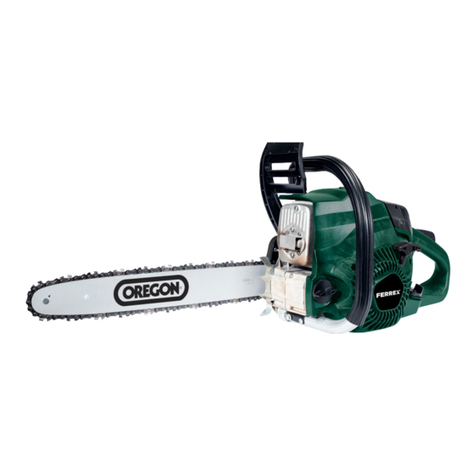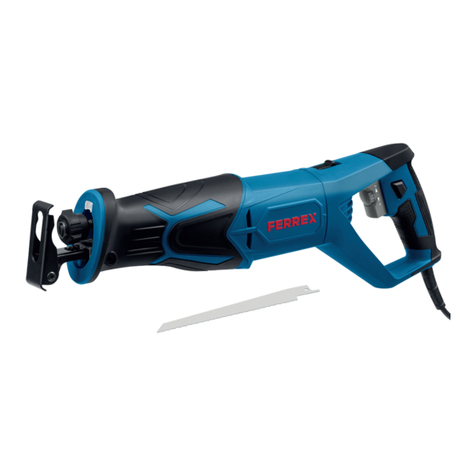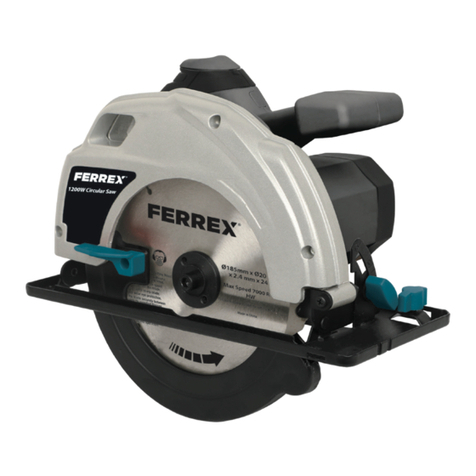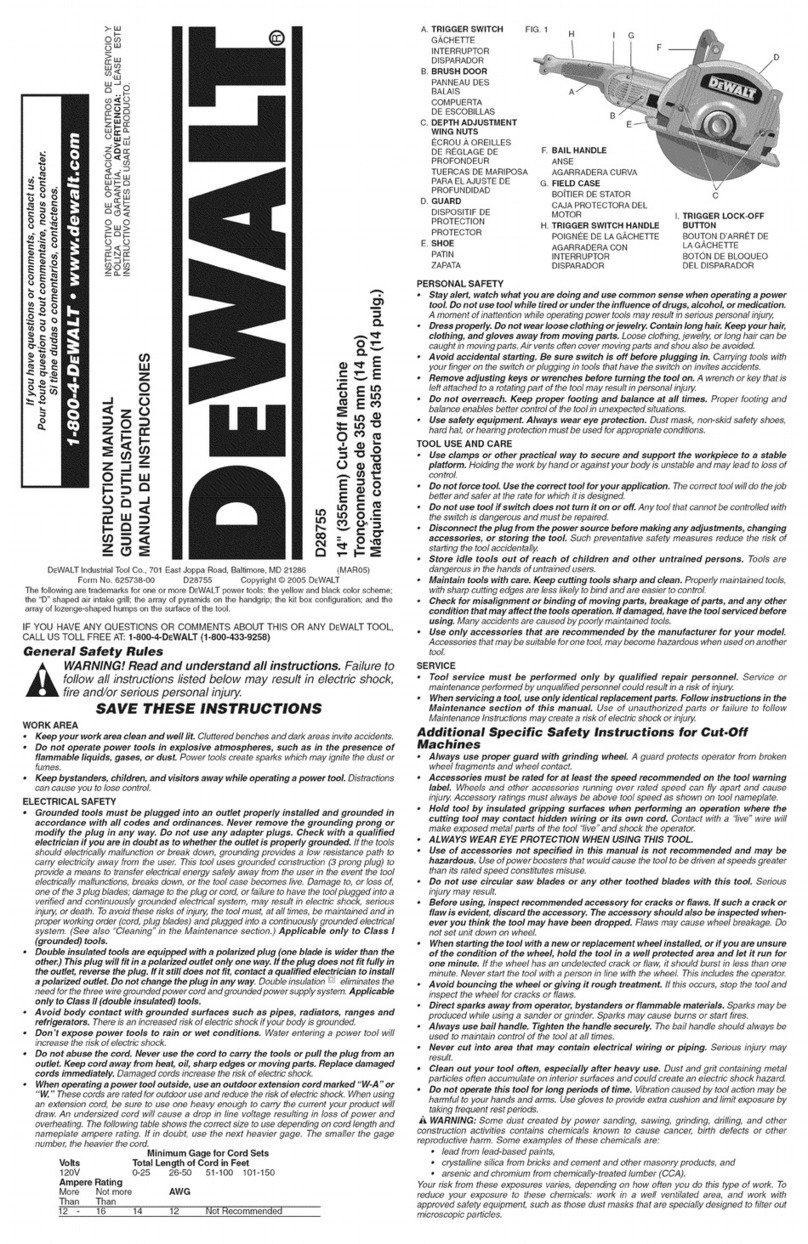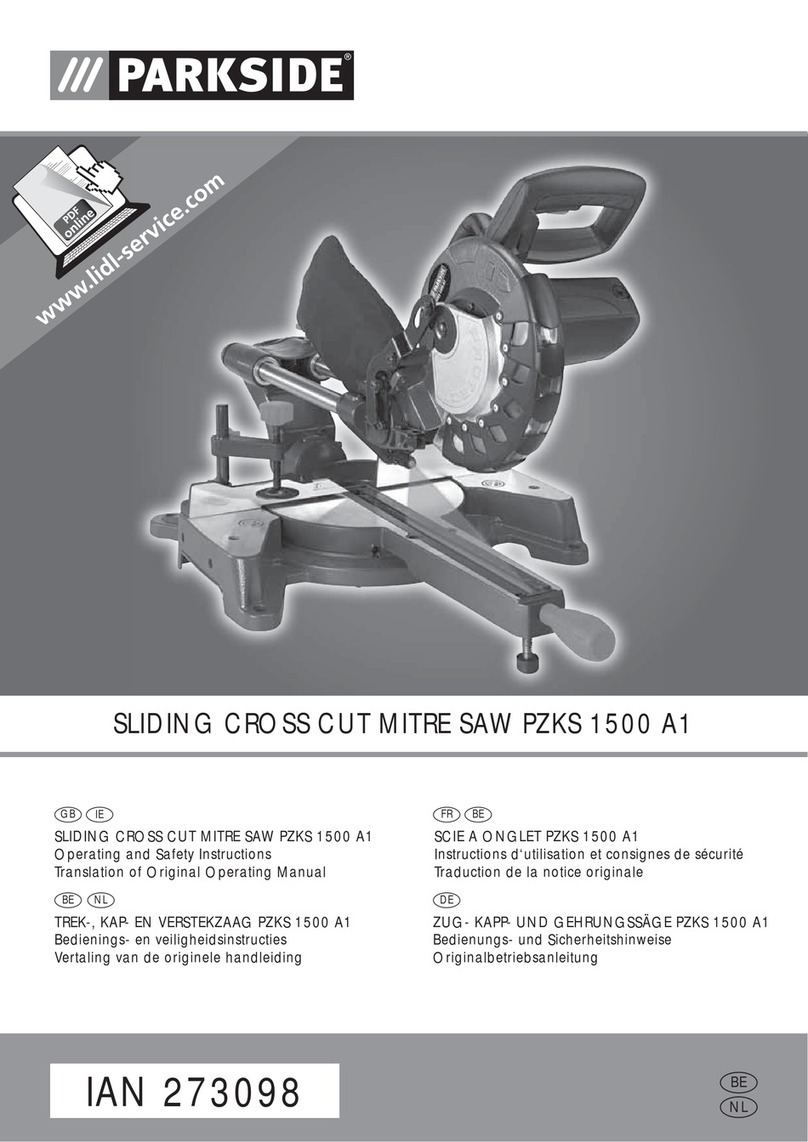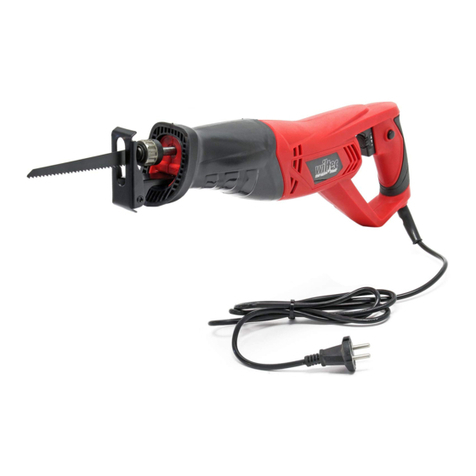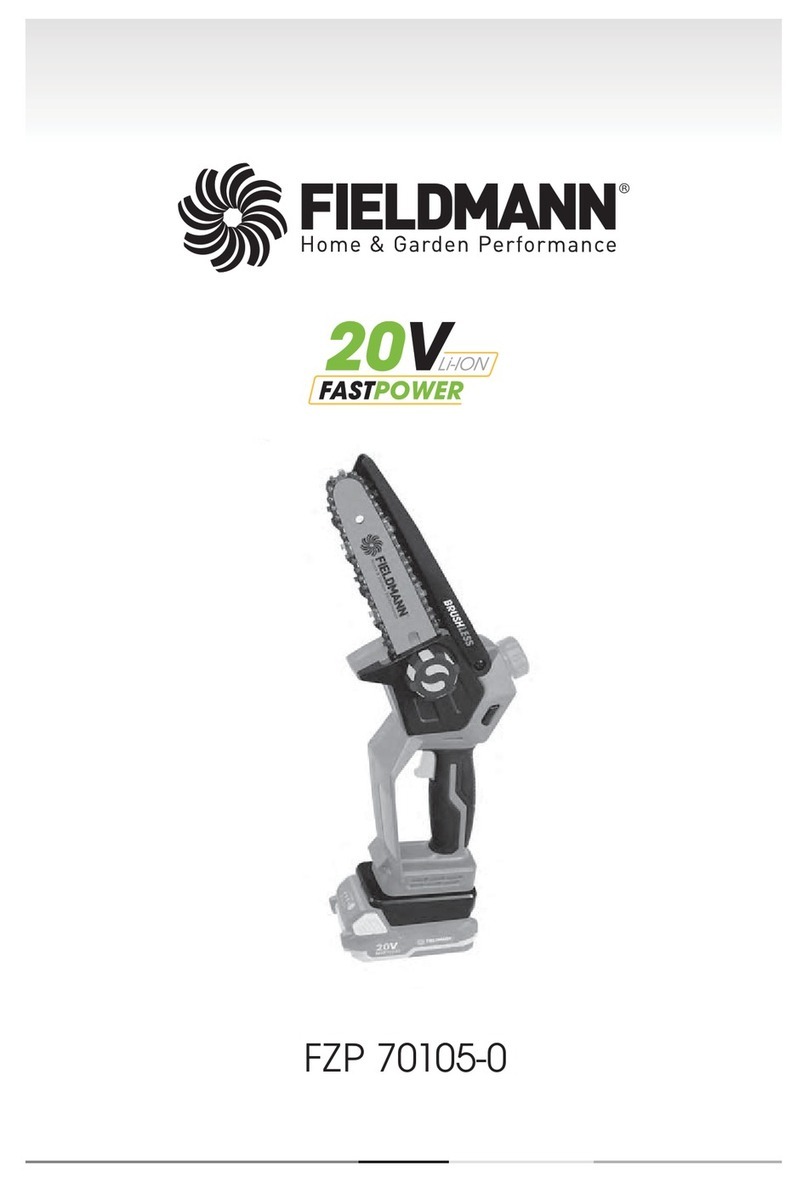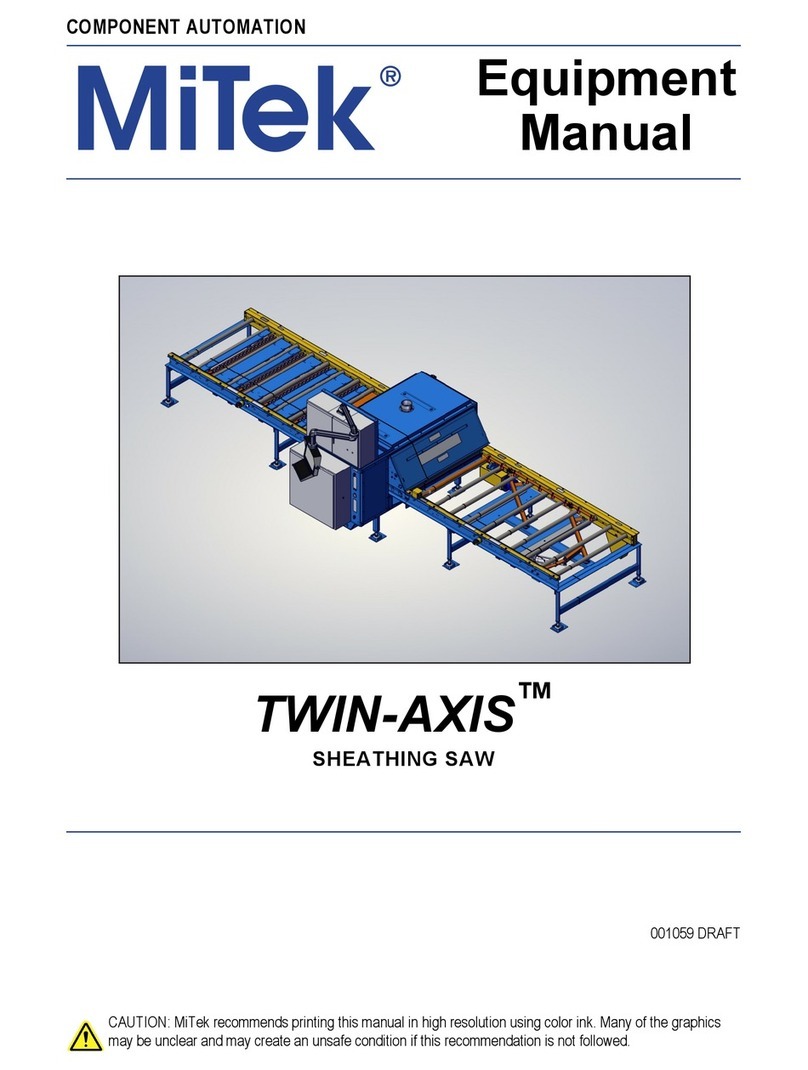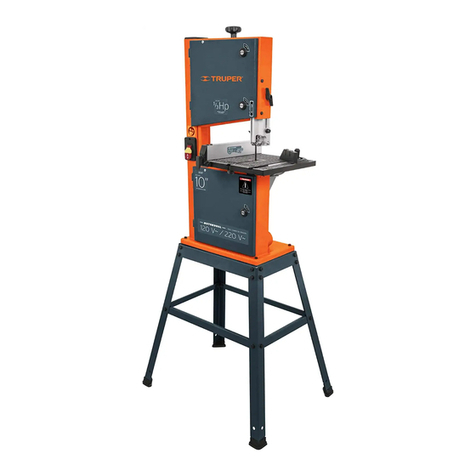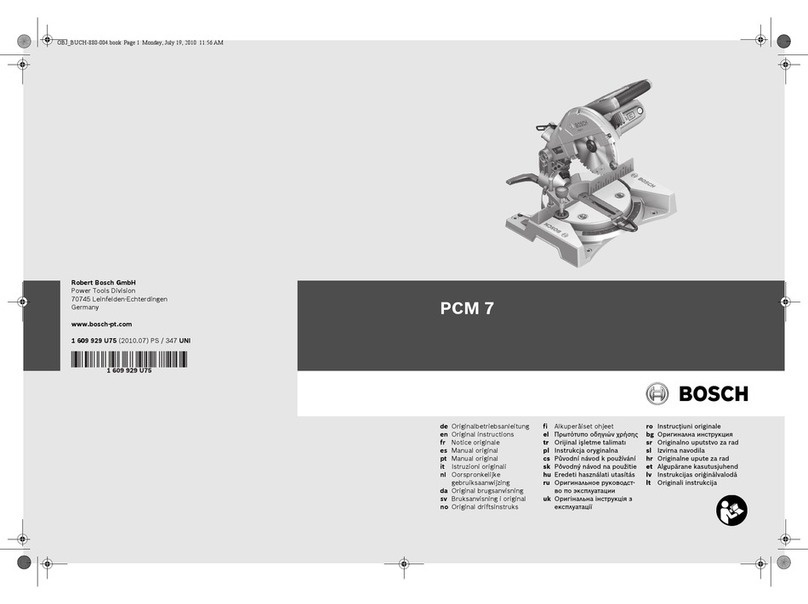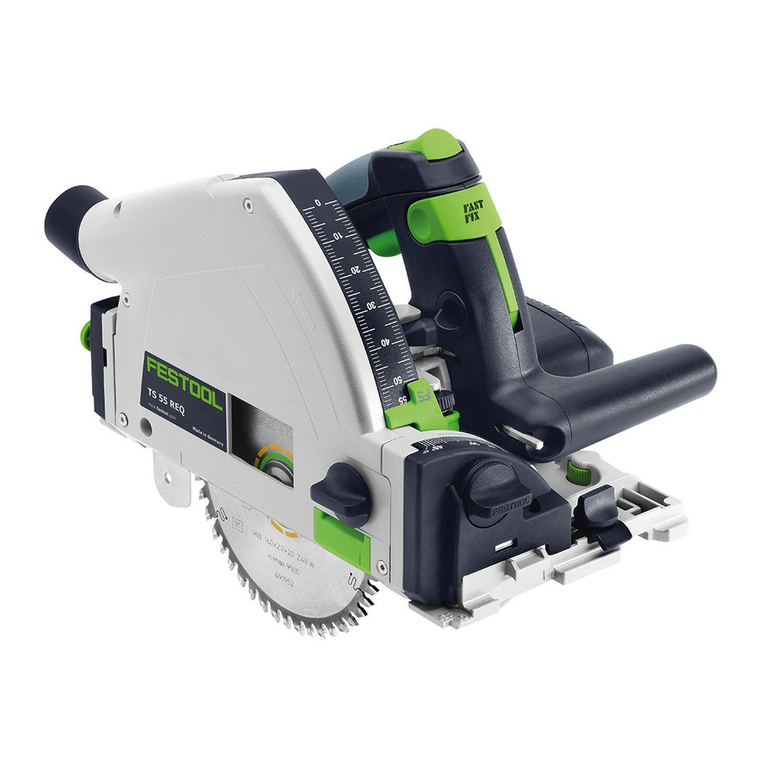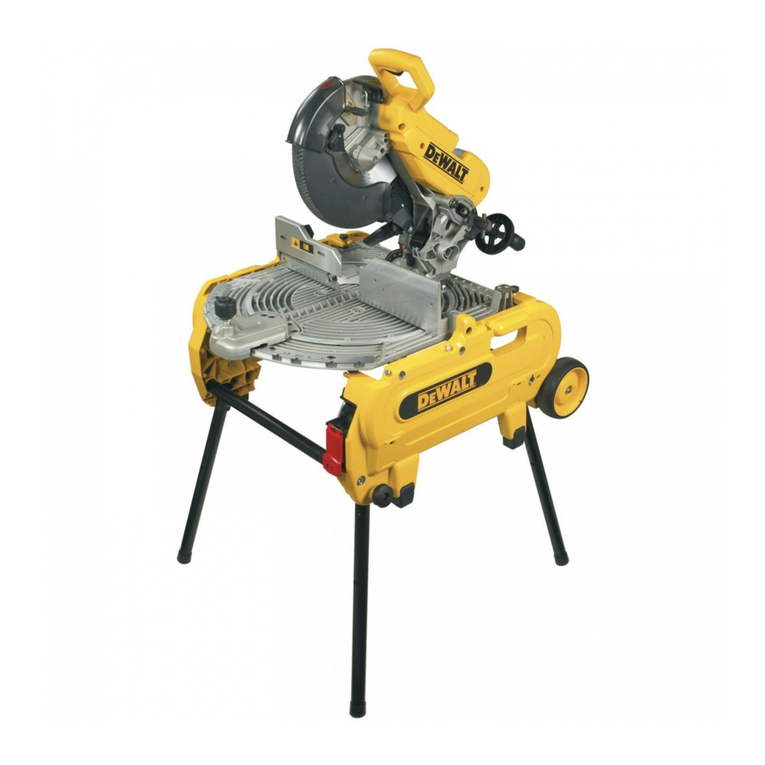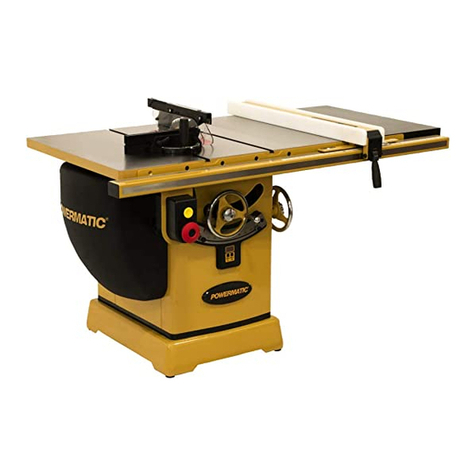FERREX F-TS 2000-1 User manual

Original instructions
TABLE SAW
User Manual
F_TS_2000_1_GB_SPK7.indb 1F_TS_2000_1_GB_SPK7.indb 1 04.06.2019 10:18:4204.06.2019 10:18:42

2
1
1 32
2 3
7
8
9
11
4 5 6 7
32
10
23
4
2220 19 17 14 13
21
16
15
18 12
F_TS_2000_1_GB_SPK7.indb 2F_TS_2000_1_GB_SPK7.indb 2 04.06.2019 10:18:4504.06.2019 10:18:45

3
4 5
6 7
8 9
28
23 2524
8
9
1
8
9
8
8
8x
24 x
16 x
12 x
26
27
29
8 x
8 x
4x
11
F_TS_2000_1_GB_SPK7.indb 3F_TS_2000_1_GB_SPK7.indb 3 04.06.2019 10:18:4604.06.2019 10:18:46

4
10 11
12 13
14 15
10
30
5
33
810
8
A 30 7
34
10
F_TS_2000_1_GB_SPK7.indb 4F_TS_2000_1_GB_SPK7.indb 4 04.06.2019 10:18:4904.06.2019 10:18:49

5
16 17
18 19
20 21
4
31
4
36
5
35
22 20
F_TS_2000_1_GB_SPK7.indb 5F_TS_2000_1_GB_SPK7.indb 5 04.06.2019 10:18:5204.06.2019 10:18:52

6
22 23
39 32
403843
24 25
26 27
423
37
2
41
Laser 19
202
F_TS_2000_1_GB_SPK7.indb 6F_TS_2000_1_GB_SPK7.indb 6 04.06.2019 10:18:5404.06.2019 10:18:54

7
28 29
44
30
a b
F_TS_2000_1_GB_SPK7.indb 7F_TS_2000_1_GB_SPK7.indb 7 04.06.2019 10:18:5804.06.2019 10:18:58

8
Table of contents
1. Safety information......................................................................10
2. Layout and items supplied..........................................................22
3. Intended use...............................................................................23
4. Technical data .............................................................................24
5. Before using the equipment .......................................................26
6. Operation....................................................................................28
7. Replacing the power cable..........................................................36
8. Cleaning, maintenance and ordering spare parts........................36
9. Disposal and recycling.................................................................38
10. Storage .......................................................................................38
11. Transport.....................................................................................38
12. Troubleshooting..........................................................................39
F_TS_2000_1_GB_SPK7.indb 8F_TS_2000_1_GB_SPK7.indb 8 04.06.2019 10:18:5904.06.2019 10:18:59

9
Caution! Wear gloves. You must wear gloves at all times when handling saw
blades.
Caution! Risk of injury! Do not reach into the running saw blade.
Caution! Risk of injury from sharp edges!
Danger! - Read the operating instructions to reduce the risk of injury
Caution! Wear ear-muffs. The impact of noise can cause damage to hearing.
Caution! Wear safety goggles. Sparks generated during work or splinters, chips
and dust emitted by the equipment can cause loss of sight.
Caution! Wear a breathing mask. Dust which is injurious to health can be gene-
rated when working on wood and other materials. Never use the tool to work on
any materials containing asbestos!
Declaration of conformity: Products bearing this symbol comply with all ap-
plicable Community legislation of the European Economic Area.
F_TS_2000_1_GB_SPK7.indb 9F_TS_2000_1_GB_SPK7.indb 9 04.06.2019 10:18:5904.06.2019 10:18:59

10
Danger:
When using the equipment, a number of
safety precautions must be observed to avo-
id injuries and damage. Please read these
original operating instructions and safety
information with due care. Keep these
operating instructions in a safe place so that
the information is available at all times. If
you give the equipment to any other person,
please hand over these original operating
instructions and the safety information
as well. We cannot accept any liability for
damage or accidents which arise due to a
failure to follow these instructions and the
safety instructions.
The up-to-date operating instructions can
also be downloaded as a PDF le from our
website at www.isc-gmbh.info.
1. Safety information
Danger:
Read all the safety information and ins-
tructions. Failure to adhere to the safety
information and instructions set out below
may result in electric shock, re and/or seri-
ous injury.
Keep all the safety information and inst-
ructions in a safe place for future use.
Special information about the laser
Danger! Laser radiation
Do not look into the beam
Laser class 2
CAUTION ! – LASER RADIATION !
Do not look into the beam!
Laser specication
Laser class 2
λ: 650 nm; P: < 1 mW
In accordance with EN 60825-1: 2014
• Do not look directly into the laser beam
with the naked eye.
• Never look directly into the laser path.
• Never direct the laser beam at reflecting
surfaces or persons or animals. Even a
low output laser beam can inflict injury
on the eye.
• Caution: It is vital to follow the work
procedures described in these instruc-
tions. Using the equipment in any other
way may result in hazardous exposure
to laser radiation.
• Never open the laser module.
F_TS_2000_1_GB_SPK7.indb 10F_TS_2000_1_GB_SPK7.indb 10 04.06.2019 10:18:5904.06.2019 10:18:59

11
Safety information on the batteries
Use of the batteries
• Inserting the batteries when the laser is
switched on can cause accidents.
• If the equipment is not used correctly,
the batteries may leak. Avoid contact
with the battery fluid. If you come into
contact with battery fluid, clean the af-
fected body part with running water. If
you get battery fluid in your eyes, seek
immediate medical assistance.
• Escaped battery fluid can cause skin
irritation and acid burns.
• Never expose the batteries to excess
heat such as sunshine, fire or similar.
• Never recharge batteries that are not
suitable for recharging.There is a risk of
explosion!
• Keep batteries away from children, do
not short circuit batteries or disassem-
ble.
• Seek a doctor’s advice immediately if a
battery is swallowed.
• If necessary, clean the contacts on the
battery and equipment before inserting
the batteries.
• Ensure that you insert the batteries the
right way round.
• Remove flat batteries immediately from
the equipment.There is an increased
risk of leakage.
• Always change all batteries in one go.
• Insert only batteries of the same type,
do not use different types of batteries or
used and new batteries together.
• Make sure that the equipment is swit-
ched off after use.
• Remove the batteries if the equipment
is not used over a longer period.
• Do not deform/damage batteries or
open them/take them apart and do not
short-circuit them.
General safety information for power
tools
Warning!
Read all the safety information, instruc-
tions, illustrations and technical data
provided on or with this power tool.
Failure to adhere to the following instruc-
tions may result in electric shock, re and/or
serious injury.
Keep all the safety information and inst-
ructions in a safe place for future use.
The term„power tool“ used in the safety
information and instructions refers to power
tools operated from the mains power supply
(with a power cable) and to battery opera-
ted power tools (without a power cable).
F_TS_2000_1_GB_SPK7.indb 11F_TS_2000_1_GB_SPK7.indb 11 04.06.2019 10:19:0004.06.2019 10:19:00

12
1. Workplace safety
a) Keep your work area clean and well
lit. Untidy or unlit work areas can result
in accidents.
b) Do not use this power tool in an area
where there is a risk of explosion and
where there are inflammable liquids,
gases or dust. Power tools generate
sparks that can ignite dust or vapors.
c) Keep children and other people away
from the power tool while you are
using it. If you are distracted you may
lose control of the power tool.
2. Electrical safety
a) The plug on the power tool must fit
into the socket. The socket must not
be modified in any way. Do not use
adapter plugs together with power
tools with a protective earth. Unmo-
died plugs and matching sockets will
reduce the risk of an electric shock.
b) Avoid body contact with earthed sur-
faces such as pipes, heating systems,
stoves and refrigerators.There is an
increased risk of suering an electric
shock if your body is earthed.
c) Keep the power tool out of the rain
and away from moisture. The ingress
of water into an electric power tool
increases the risk of an electric shock.
d) Do not use the power cable for a
purpose for which it is not designed,
for example to carry the power tool,
hang it up or to pull the plug out of
the socket. Keep the power cable
away from heat, oil, sharp edges and
moving parts. Power cables that are
damaged or tangled increase the risk of
an electric shock.
e) If you use an electric power tool out-
doors, use only extension cables that
are suitable for outdoor use. The use
of an extension cable which is suitable
for outdoor use reduces the risk of an
electric shock.
f) If you cannot avoid using the power
tool in a damp location, use a residu-
al current device (RCD) circuit brea-
ker. The use of a residual current device
(RCD) circuit breaker will reduce the risk
of suering an electric shock.
3. Safety of persons
a) Be careful, watch what you are doing
and be sensible and responsible
when using an electric power tool.
Never use the power tool if you are
tired or under the influence of drugs,
alcohol or medication. One moment
of inattention when using the electric
tool can result in serious injuries.
F_TS_2000_1_GB_SPK7.indb 12F_TS_2000_1_GB_SPK7.indb 12 04.06.2019 10:19:0004.06.2019 10:19:00

13
b) Wear personal safety equipment and
always wear safety goggles. Wearing
personal safety equipment such as dust
masks, non-slip safety shoes, a helmet
or ear mus, depending on the type
and application of the tool, reduces the
risk of injury.
c) Make sure that the tool cannot start
up accidentally. Ensure that the
power tool is switched off before you
connect it to the power supply and/
or connect the battery pack, pick it
up or carry it. If you have your nger
on the switch while carrying the power
tool or if you connect the power tool to
the power supply while it is switched
on, this may cause accidents.
d) Remove all adjusting tools or wren-
ches before you switch on the power
tool. Any tool or wrench in a rotating
part of the power tool could cause inju-
ries.
e) Avoid abnormal working postures.
Make sure you stand squarely and
keep your balance at all times. This
will enable you to control the power
tool better in unexpected situations.
f) Wear suitable clothes. Never wear
loose fitting clothes or jewelry. Keep
hair and clothing away from moving
parts. Loose clothing, jewelry or long
hair can be caught by moving parts.
g) If dust extraction devices and dust
collection devices can be fitted, they
must be connected and must be used
correctly. The use of a dust extractor
can reduce the dangers posed by dust.
h) Do not allow yourself to be lulled
into a false sense of security and do
not ignore the safety regulations
covering electric power tools, even
if you are familiar with the power
tool after having used it many times.
Carelessness can lead to serious injuries
in just a fraction of a second.
4. Using and handling the power tool
a) Do not overload your power tool. Use
the correct electric tool for the job in
hand. The correct tool will enable you
to work better and more safely within
the specic performance range.
b) Do not use an electric power tool if
the switch is defective. An electric
power tool that cannot be switched on
or o is dangerous and must be repai-
red.
c) Pull the plug out of the socket and/or
remove the removable battery pack
before making any adjustments to
the tool, changing plug-in tool parts
or putting the power tool down. The-
F_TS_2000_1_GB_SPK7.indb 13F_TS_2000_1_GB_SPK7.indb 13 04.06.2019 10:19:0004.06.2019 10:19:00

14
se precautions will prevent the power
tool starting accidentally.
d) Keep unused electric tools out of
the reach of children. Do not allow
people who are not familiar with the
power tool or who have not read the-
se instructions to use the power tool.
Electric tools are dangerous if they are
used by inexperienced people.
e) Look after power tools and plug-in
tools with care. Check that moving
parts function correctly and do not
jam, and whether any parts are
broken or damaged such that they
adversely affect the function of the
power tool. Have damaged parts re-
paired before you use the power tool.
Many accidents are caused by poorly
maintained electric tools.
f) Keep cutting tools sharp and clean.
Carefully maintained cutting tools with
sharp cutting edges will jam less and
are easier to control.
g) Use the power tool, plug-in tools, etc.
as set out in these instructions. Take
account of the conditions in your
work area and the job in hand. Using
electric tools for purposes other than
the one for which they are designed can
result in dangerous situations.
h) Keep the handles and grip surfaces
dry, clean and free from oil and grea-
se. If the handles and grip surfaces are
slippery, it will not be possible to ope-
rate and control the power tool safely in
unforeseen situations.
5. Service
a) Have your power tool repaired only
by trained personnel using only ge-
nuine spare parts. This will ensure that
your power tool remains safe to use.
Special safety information for bench-type
circular saws
Safety information relating to the safety
guards
a) Leave the safety guards fitted in
place. Safety guards must always be
in proper working order and fitted
correctly. Loose, damaged or defective
safety guards must be repaired or repla-
ced.
b) Always use the saw blade safety
guard and the splitter when perfor-
ming separation cuts. For separation
cuts in which the saw blade cuts right
through the workpieces thickness, the
safety guard and other safety equip-
ment reduce the risk of injuries.
F_TS_2000_1_GB_SPK7.indb 14F_TS_2000_1_GB_SPK7.indb 14 04.06.2019 10:19:0004.06.2019 10:19:00

15
c) Do not use this saw to cut rebates or
grooves. For design reasons, the saw is
not suitable for such work.The splitter
must never be removed, because it pre-
vents jamming and kickbacks.
d) Before switching on the power tool,
make sure that the saw blade does
not touch the safety guard, splitter
or workpiece. Accidental contact bet-
ween these components and the saw
blade could lead to dangerous situati-
ons.
e) Adjust the splitter in accordance with
the description in these operating
instructions. Incorrect clearances, posi-
tion or alignment may be the reason
why the splitter fails to prevent a kick-
back eectively.
f) Use the right saw blade for the split-
ter. For the splitter to work properly,
the saw blade diameter must match the
splitter, the saw plate of the saw blade
must be thinner than the splitter and
the tooth pitch must be greater than
the thickness of the splitter.
Safety information for sawing
a) DANGER: Do not let your hands and
fingers come anywhere near the saw
blade or the sawing area. It just takes
one moment of inattention or a slip and
your hand could be directed towards
them, which could result in serious inju-
ries.
b) Only feed the workpiece to the saw
blade or cutting tool against the
direction of rotation. If the workpiece
is fed in in the same direction as the
direction of rotation of the saw blade
above the table, this could lead to both
the workpiece and your hand being
drawn in to the saw blade.
c) Never use the miter stop to feed in
the workpiece when performing
longitudinal cuts, and never use the
parallel stop in addition for setting
the length when performing cross
cuts with the miter stop. Feeding the
workpiece in with both the parallel stop
and the miter stop at the same time in-
creases the likelihood of the saw blade
getting jammed, which will result in
kickback.
d) When performing longitudinal cuts,
always apply the infeed force on the
workpiece between the stop rail and
the saw blade. Use a push stick if the
gap between the stop rail and the
saw blade is less than 150 mm, and a
push block if the gap is less than 50
mm. Work aids of this kind help ensure
that your hand is kept at a safe distance
F_TS_2000_1_GB_SPK7.indb 15F_TS_2000_1_GB_SPK7.indb 15 04.06.2019 10:19:0004.06.2019 10:19:00

16
from the saw blade.
e) Only use the supplied push stick of
the manufacturer or one which has
been manufactured in accordance
with instructions. The push stick ensu-
res that your hand is kept at a sucient
distance from the saw blade.
f) Never use a damaged or partially
sawn push stick. If the push stick is
damaged, it could break, causing your
hand to come into contact with the saw
blade.
g) Do not perform your work“free-han-
ded”. Always use the parallel stop or
the miter stop to position and feed in
the workpiece. “Free-handed”means
using your hand to support or feed in
the workpiece with the parallel stop or
miter stop. Free-handed sawing leads
to misalignment, jamming and kick-
backs.
h) Never reach over or into a rotating
saw blade. Reaching for a workpiece
could lead to accidental contact with
the rotating saw blade.
i) Provide support for long and/or wide
workpieces behind and/or at the side
of the saw table, so that they stay
horizontal. Long and/or wide work-
pieces have a tendency to fall o at the
edge of the saw table; this leads to a
loss of control, the jamming of the saw
blade and kickbacks.
j) Feed the workpiece in smoothly. Do
not bend or twist the workpiece. If
the saw blade becomes jammed,
switch off the power tool immedia-
tely, pull out the power plug and
rectify the cause of the jam. If the saw
blade becomes jammed because of the
workpiece, this could cause a kickback
or cause the motor to block.
k) Do not remove the sawn material
while the saw is running. Sawn ma-
terial could become stuck between the
saw blade and the stop rail or in the
saw blade and cause your ngers to be
drawn into the saw blade if you attempt
to remove it. Switch o the saw and
wait until the saw blade has come to a
standstill before removing the material.
l) For longitudinal cuts on workpieces
thinner than 2 mm, use an additional
parallel stop which has contact with
the table surface. Thin workpieces can
get wedged under the parallel stop and
cause kickback.
F_TS_2000_1_GB_SPK7.indb 16F_TS_2000_1_GB_SPK7.indb 16 04.06.2019 10:19:0004.06.2019 10:19:00

17
Causes of kickbacks and related safety
information
A kickback is the sudden reaction of the
workpiece resulting from a caught, jammed
saw blade or a cut performed at an angle
in the workpiece relative to the saw blade,
or when part of the workpiece becomes
jammed between the saw blade and the
parallel stop or any other xed object.
In most cases when kickback occurs, the
workpiece gets caught by the rear section of
the saw blade, gets lifted from the saw table
and thrown in the direction of the operator.
Kickback is the result of the bench-type cir-
cular saw being used incorrectly or wrongly.
It can be prevented by suitable precautions,
as described below.
a) Never position yourself in a direct
line with the saw blade. Always
stand to the side of the saw blade,
at the side with the stop rail. In the
event of kickback, the workpiece can be
thrown at high speed towards persons
who are standing in line with the saw
blade.
b) Never reach into or behind the saw
blade to pull or support the workpie-
ce. This could lead to accidental contact
with the saw blade, or kickback could
cause your ngers to be drawn into the
saw blade.
c) Never hold and press a workpiece
against the rotating saw blade when
you want to saw the workpiece. Pres-
sing the workpiece against the saw bla-
de when sawing workpiece will result in
jamming and kickback.
d) Align the stop rail parallel to the
saw blade. If the stop rail is not pro-
perly aligned, the workpiece will press
against the saw blade and cause kick-
back.
e) Do not use this saw to cut rebates or
grooves. For design reasons, the saw is
not suitable for such work.The splitter
must never be removed, because it pre-
vents jamming and kickbacks.
f) Be particularly careful when sawing
in areas into which you cannot see on
workpieces which have been joined
together. The plunge-cutting saw
blade may saw into objects which could
cause kickback.
g) Support large panels to reduce the
risk of a kickback by a jammed saw
blade. Large panels may sag under
their own weight. Panels must be pro-
vided with support at all points where
they project over the table surface.
h) Do not work on any workpieces
which are twisted, knotted or war-
F_TS_2000_1_GB_SPK7.indb 17F_TS_2000_1_GB_SPK7.indb 17 04.06.2019 10:19:0004.06.2019 10:19:00

18
ped or do not have a straight edge on
which they can be guided with a mi-
ter stop or along a stop rail. A warped,
knotted or twisted workpiece is instable
and will lead to the misalignment of
the kerf with the saw blade, and jam-
ming and kickback.
i) Never saw several workpieces sta-
cked one on top of the other or one
after the other. The saw blade could
catch one or more parts and cause kick-
back.
j) Do not start the saw if the saw is in
the workpiece. If the saw blade is jam-
med it may lift the workpiece and cause
kickback when the saw is restarted.
k) Keep the saw blades clean, sharp and
adequately set. Never use bent saw
blades or saw blades with cracked or
broken teeth. Saw blades which are
sharp and properly set minimize jam-
ming, blockages and kickback.
Safety information for the operation of
bench-type circular saws
a) Switch off the bench-type circular
saw and disconnect it from the mains
power supply before you remove the
table insert, change the saw blade,
adjust the splitter or the saw blade
safety guard and when the machine
is left unattended. Precautions are
intended to help prevent accidents.
b) Never leave the bench-type circular
saw running unattended. Switch
off the power tool and do not leave
it before it has come to a complete
standstill. A saw which is left running
unattended is an uncontrolled danger.
c) Set the saw up at a location which
is level and well-lit and where you
can stand steadily and keep your
balance. The location where you set
it must provide sufficient space for
you to handle your larger workpieces
easily. Untidiness, unlit work areas and
uneven, slippery oors can lead to acci-
dents.
d) Remove wood sawings and sawdust
regularly from under the saw table
and/or from the dust extractor. Accu-
mulations of sawdust are combustible
and can self-ignite.
e) Secure the bench-type circular saw. If
the bench-type circular saw is not pro-
perly secured, it could move or topple
over.
f) Remove all adjusting tools, residual
wood, etc., from the bench-type
circular saw before you switch it on.
Distractions or possible jams can be
dangerous.
F_TS_2000_1_GB_SPK7.indb 18F_TS_2000_1_GB_SPK7.indb 18 04.06.2019 10:19:0004.06.2019 10:19:00

19
g) Always use saw blades of the correct
size and with a suitable mounting
hole (diamond-shaped or round).
Saw blades that do not match the
mounting parts of the saw will not
rotate truly and will result in a loss of
control.
h) Never use damaged or the incorrect
saw blade assembly material such as,
e.g. flanges, washers, screws or nuts.
This saw blade assembly material has
been specially designed for your saw,
for safe operation and optimum perfor-
mance.
i) Never get onto the bench-type circu-
lar saw and never use the bench-type
circular saw as a step stool. Serious
injuries could occur if the power tool
topples over or if you come into contact
with the saw blade accidentally.
j) Make sure that the saw blade is
fitted in the correct direction of rota-
tion. Do not grinding wheels or wire
brushes with the bench-type circular
saw. If the saw blade is tted incor-
rectly or accessories are used which are
not recommended, this could lead to
serious injuries.
Additional safety instructions
1. Only use a saw blade which has the
external diameter and hole diameter
specied in the original operating inst-
ructions (“Technical data”section).
2. Only use saw blades whose permissible
maximum speed of rotation is not lower
than the maximum spindle speed of the
bench-type circular saw and which are
suitable for the material to be cut.
3. Only t blades which are well sharpe-
ned and have no cracks or deformati-
ons.
4. Faulty saw blades must be replaced
immediately.
5. It must be possible for the blade to run
freely.
6. Check the saw blade guard for damage
and wear each time before using the
saw.
7. The saw blade guard must lower again
automatically under its own weight af-
ter each cut.The saw blade guard must
lift when the workpiece is pushed in the
direction of the saw blade.
8. Damaged or faulty safety devices have
to be replaced immediately.
9. It is imperative to make sure that all de-
vices which cover the saw blade are in
good working order.
F_TS_2000_1_GB_SPK7.indb 19F_TS_2000_1_GB_SPK7.indb 19 04.06.2019 10:19:0004.06.2019 10:19:00

20
10. Never dismantle the machine‘s safety
devices or render them inoperative.
11. Ret all guards and safety devices im-
mediately after you have completed any
repairs or maintenance work.
12. Keep the push stick or handle for a push
block at the machine at all times, even
when you are not using them. Slot the
push stick or the push block into its hol-
der when not in use.
13. The sawing of angles/wedges is only
permitted if an appropriate auxiliary
stop (cross stop) is used.
14. Replace the table insert if it is worn –
pull out the power plug –
15. If necessary, wear suitable personal
protection equipment.This could con-
sist of:
a. Ear mus to prevent the risk of damaging
your hearing;
b. A breathing mask to avoid the risk of in-
haling hazardous dust;
c. Always wear gloves when handling saw
blades and rough materials.Whenever
practicable, saw blades must be carried
in a container;
16. Use only the transport devices to move
the equipment. Never use the guards
for handling or moving the equipment.
17. While you are moving the machine it is
best to cover the top part of the blade,
e.g. with the guard.
18. Give these safety instructions to all per-
sons who work on the machine.
19. Do not use this saw to cut re wood.
20. Do not use this saw to cross-cut round-
wood.
21. The machine is equipped with a safety
switch to prevent it from being swit-
ched on again accidentally after a pow-
er failure.
22. If you need to use an extension cable,
make sure its conductor cross-section
is big enough for the saw‘s power con-
sumption. Minimum cross-section: 1.5
mm².
23. If you use a cable reel, the complete
cable must be pulled o the reel.
24. Never load the machine so much that it
cuts out.
25. Always press the workpiece rmly
against the saw table.
26. Make sure that o-cuts do not catch on
the saw blade crown. Risk of catapul-
ting!
27. Be sure to observe the safety informa-
tion and operating and maintenance
instructions issued by the manufacturer,
as well as the dimensions listed in the
Technical Data.
28. It is imperative to observe the accident
prevention regulations in force in your
F_TS_2000_1_GB_SPK7.indb 20F_TS_2000_1_GB_SPK7.indb 20 04.06.2019 10:19:0004.06.2019 10:19:00
Table of contents
Other FERREX Saw manuals
